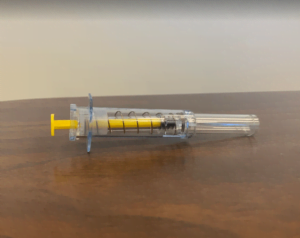When creating an assembly that contains a spring, you may be accustomed to designing the machined parts first, allocating space in your design for a spring that you’ll add toward the end of the process.
But saving the spring design for last—or close to it—often leads to problems that can easily be avoided. If you want to ensure that your assembly functions as intended, don’t wait until the last minute to design your spring!
Why Design Custom Springs Earlier in the Process?

Factors like spring size, type, and properties are essential to get right at the beginning of your assembly design. Otherwise, the spring may not fit or function the way you need it to. Consider these unfortunate scenarios that can occur when you wait too long to design the spring:
- Miscalculating the size of the spring and having to sacrifice space in the design—including, at times, important design features—to make it fit
- Designing an entire assembly around the misconception that you needed one custom spring type when you needed another type all along
- Basing an assembly design on a similar product in your current line that has a spring, and then later discovering that the new spring needs to be twice as strong or travel twice as far
- Having to add weight to an aerospace assembly with strict weight specifications to get the spring to function properly
We’ve seen these outcomes firsthand far too many times—and we want to help our customers avoid them.
Designing a spring for your assembly too late in the game can lead to costly redesigns that add many weeks to your lead time, or force you to compromise on essential details, like material and wire thickness, to make your spring work for your design. When you design your spring earlier, you keep your options open to ensure that your assembly design works for you.
Critical Dimensions for Custom Spring Design
Of course, you can’t design a spring in an empty space—it’s impossible to create the right custom spring for an assembly without knowing a few critical dimensions.
First you’ll need to determine what aspects of the design are most critical. Once you define your constraints, you will be able to design the right spring for your assembly. This could be either dimensional or functional constraints. Some examples include:
- Functional constraints such as moisture or operating temperature will limit which spring materials can be used
- Dimensional constraints such as maximum outer diameter, maximum free length, or minimum compressed length
- Performance constraints such as cycle life, high loading speeds, or sustained loads
- Load constraints are the most common and helpful. Usually 1 or 2 load constraints are required for a spring. This is the force required to compress, extend, or rotate a spring a specific distance. The method to determine this force or movement is different for each type of spring:
- For custom compression springs, determine the compressed length for the specific load
- For custom extension springs, determine the extended length required for the specific load
- For custom torsion springs, determine the rotation angle required for the specific moment
Using this information, you can identify what your spring must do, and what parts of the design are flexible. If you need help with these calculations or want to dig deeper into spring design, contact us at Gifford Spring for assistance and quoting a prototype.
Have any questions about your spring design? Contact Gifford Spring for support early on in the design process. We’re here to help with all your custom spring design needs!